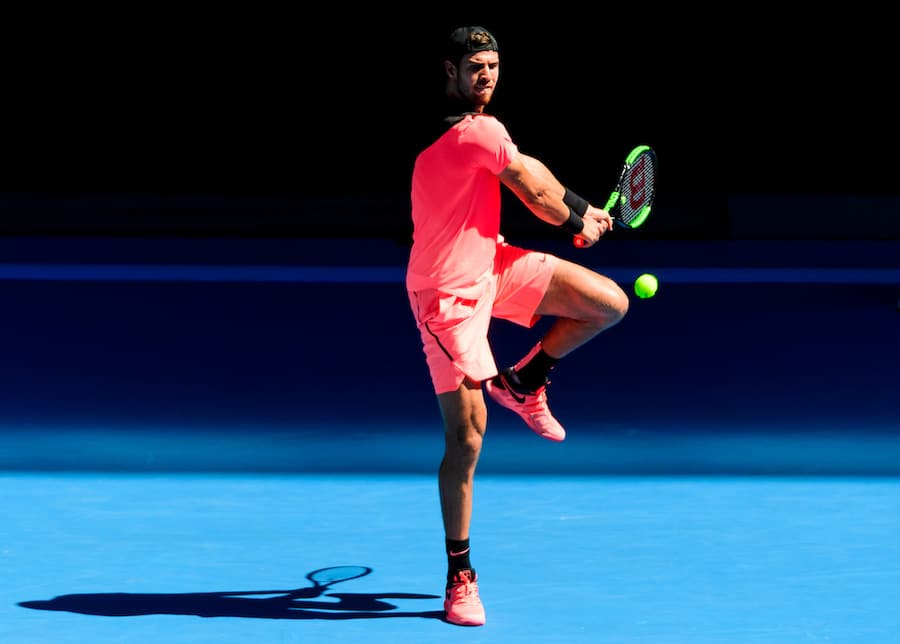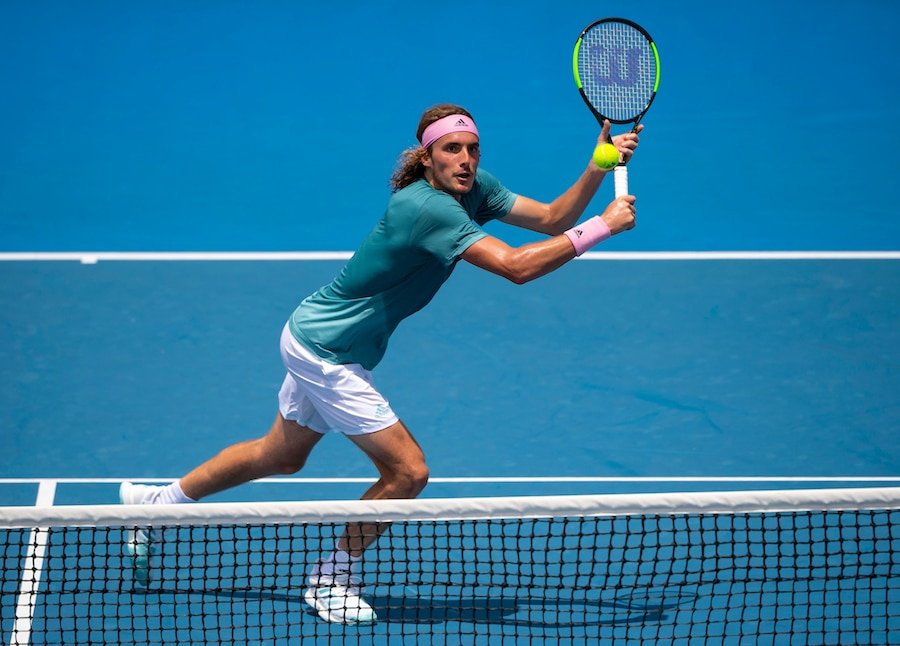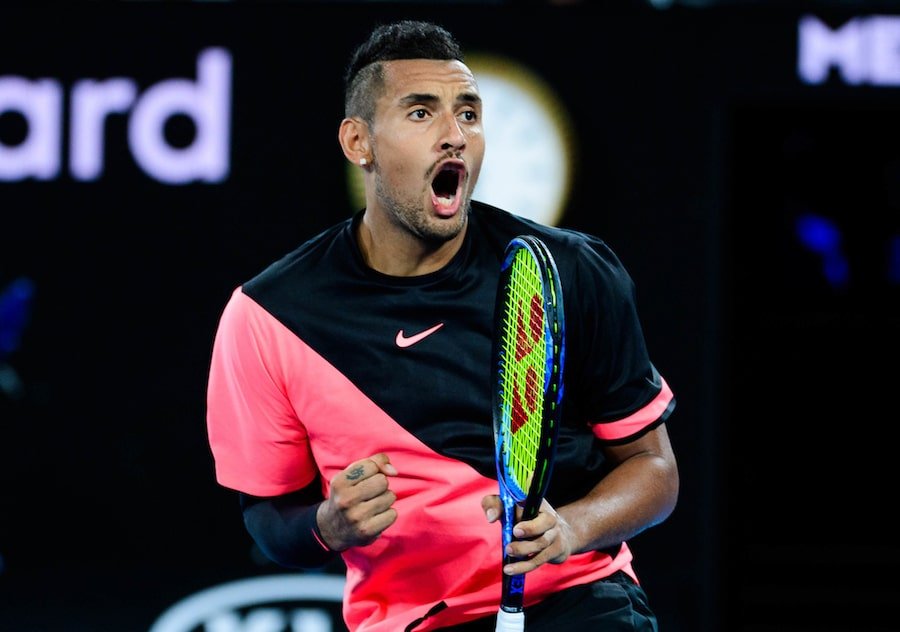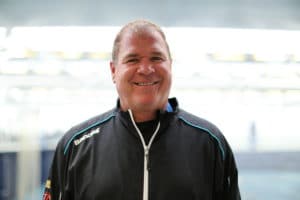
Change is coming this year and Khachanov can be the one to show the way
Tennishead expert David Sammel thinks there is plenty of life left in the old guard but 2019 can be the year when the next generation make their big breakthrough
In 2018 we witnessed a season remarkable once again for the exploits of Novak Djokovic, Rafa Nadal and Roger Federer, but I sense that change is in the air. I believe that 2019 will be a sensational year in which tennis will crown a new young male champion at a Grand Slam.
That is not to say that the old guard have had their day. Far from it. Novak has already won the Australian Open beating Rafa in the final and there is every chance that he and Rafa will dominate the year.
Just look at the way the top three played in 2018. Roger continued his comeback by retaining the Australian Open, Rafa won once again in Paris and it has been the Novak comeback show since the grass-court season with his back-to-back Slam victories and his return to the top of the world rankings.
You can never write off the great Federer, especially at Wimbledon, but it is my humble opinion that from here onwards it will be an extra struggle for him to land another major. Winning any pro tournament is a tough ask; to win a Masters 1000 is a fantastic achievement and to win a major is historic. It is extraordinary that Roger is on 99 tournament titles and still counting.
Meanwhile everyone eagerly awaits the return of Andy Murray after a prolonged off-season. It is to be hoped that his hip will be robust enough to propel him back to the top of the sport and into the mix of Grand Slam winners again.
Even in the face of the continuing excellence of the older players, however, I think 2019 will be the year when their stranglehold on the game’s biggest prizes will be broken.
So which of the young guns will make their big breakthrough? Alexander Zverev will again start the year as the favourite to do so, but there are others closing the gap, including Kyle Edmund, who came of age in 2018, starting with his fantastic run to the semi-finals of the Australian Open. Karen Khachanov, Borna Coric, Stefanos Tsitsipas, Hyeon Chung, Denis Shapovalov and Alex de Minaur are also serious contenders.

Tsitsipas has a cool head and has made great strides, but it is probably a year too early for him. My pick is Khachanov, who went so close to beating Nadal at the US Open and backed that up by winning the Paris Masters 1000. He has serious firepower and, like all the young guns, is seemingly fearless in using this power, no matter what the situation.
Amongst the younger generation, I see the following as the pecking order in terms of who is most likely to win a Slam in 2019: Khachanov, Zverev, Edmund, Tsitsipas, Chung and Coric. As for the older players seeking to win a first Slam, I put Dominic Thiem (at the French Open) at the top of my list, followed by Kevin Anderson and Kei Nishikori.

Nick Kyrgios remains a wild card in that he is still a young gun but has not yet decided what he wants to do with his vast talent. As the Formula One driver Jenson Button put it, both he and Lewis Hamilton had to learn: working at your craft is the difference between great talent and greatness.
In 2018 we saw tennis being played earlier and faster than ever. The tactic I think players will increasingly employ in 2019 will be to come into the net more often. It is the next progression behind the early power game.
The Next Gen final in Milan between Tsitsipas and De Minaur looked a bit like a computer game, with little time wasted between fast points. I love the 25-second shot clock, which stops all the time-wasting and thankfully will be part of the tour next year. On-court coaching like we had at the qualifying tournaments for the Australian and US Opens worked well and received a big thumbs-up from most coaches. I suspect the Australian Open will be the first Slam to take the plunge and allow on-court coaching throughout the tournament, but probably not until 2020.
At the lower levels of pro tennis massive and fundamental changes are being made to the way tennis for starting pros will operate. There is going to be a new ITF transition tour, from which the best players will qualify to play ATP Challenger events. This will cut down the number of ranked players on the main ATP ranking from 2,045 to around 700.
The ITF transition ranking will be totally separate and will act as a conduit to becoming a tour pro. In principle I support the changes, but there will be many tweaks that will have to take place before it settles down into a more professional circuit.
It is not yet known whether the changes will address the big issue of so few tennis players being able to make a good living out of the game. I still have serious doubts about this. There is a chance that players ranked between 110 and 300 will be worse off than in the current system. I hope the authorities make changes quickly as and when it becomes obvious that something needs to be tweaked. If this is the case I’m sure tennis will be in a better position by 2020 or 2021.
In the meantime, bring on 2019. I can’t wait for the new season to begin.
About the expert

David has more than 25 years experience coaching pros to career-high rankings, many of whom have represented their countries in the Davis Cup and Olympics. David, who became an official ATP coach in 2014, regularly contributes to the UK’s tennis media, including BBC Radio 5 Live, The Times newspaper and Sky Sports. In 2014, he released a psychology and coaching book – ‘Locker Room Power: Building an Athlete’s Mind’ which you can read here
Look ahead to 2019 with our guide to every tournament on the ATP Tour, the WTA Tour and the ITF Tour
If you can’t visit the tournaments you love then do the next best thing and read our guide on how to watch all the ATP Tour matches on television in 2019
To read more amazing articles like this you can explore Tennishead magazine here or you can subscribe for free to our email newsletter here


